
Acadia was a colony of New France in northeastern North America which included parts of eastern Quebec, the Maritime provinces, and Maine to the Kennebec River. During much of the 17th and early 18th centuries, Norridgewock on the Kennebec River and Castine at the end of the Penobscot River were the southernmost settlements of Acadia. The French government specified land bordering the Atlantic coast, roughly between the 40th and 46th parallels. It was eventually divided into British colonies. The population of Acadia included the various indigenous First Nations that comprised the Wabanaki Confederacy, the Acadian people and some small Scottish settlements.

Penobscot Indian Island Reservation is an Indian reservation for the Penobscot Tribe of Maine, a federally recognized tribe of the Penobscot in Penobscot County, Maine, United States, near Old Town. The population was 610 at the 2010 census. The reservation extends for many miles alongside 15 towns and two unorganized territories in a thin string along the Penobscot River, from its base at Indian Island, near Old Town and Milford, northward to the vicinity of East Millinocket, almost entirely in Penobscot County. A small, uninhabited part of the reservation is in South Aroostook, Aroostook County, by which it passes along its way northward.

Port-Royal National Historic Site is a National Historic Site located on the north bank of the Annapolis Basin in the community of Port Royal, Nova Scotia. The site is the location of the Habitation at Port-Royal.

The Dummer's War was a series of battles between New England and the Wabanaki Confederacy who were allied with New France. The eastern theater of the war was fought primarily along the border between New England and Acadia in Maine, as well as in Nova Scotia; the western theater was fought in northern Massachusetts and Vermont at the border between Canada and New England. During this time, Maine and Vermont were part of Massachusetts.

Shubenacadie is a village located in Hants County, in central Nova Scotia, Canada. As of 2006, the population was 2074.

The Acadians are the descendants of the French settlers, and sometimes the Indigenous peoples, of parts of Acadia in the northeastern region of North America comprising what is now the Canadian Maritime Provinces of New Brunswick, Nova Scotia and Prince Edward Island, the Gaspé peninsula in eastern Québec, and the Kennebec River in southern Maine.

Indian Brook 14 is a Mi'kmaq reserve located in Hants County, Nova Scotia. In the 2016 Census, the reserve has 1,089 residents.
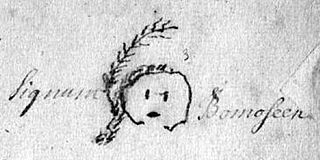
The Treaty of Portsmouth, signed on July 13, 1713, ended hostilities between Eastern Abenakis with the British provinces of Massachusetts Bay and New Hampshire. The agreement renewed a treaty of 1693 the natives had made with Governor Sir William Phips, two in a series of attempts to establish peace between the Wabanaki Confederacy and colonists after Queen Anne's War.
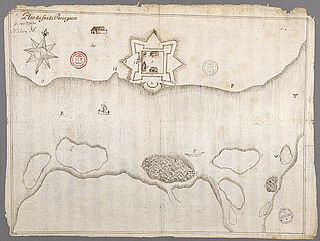
Fort Pentagouët was a French fort established in present-day Castine, Maine, which was the capital of Acadia (1670–1674). It is the oldest permanent settlement in New England.

The Battle of Bloody Creek was fought on 10/21 June 1711 during Queen Anne's War. An Abenaki militia successfully ambushed British and New England soldiers at a place that became known as Bloody Creek after the battles fought there. The creek empties into the Annapolis River at present day Carleton Corner, Nova Scotia, and was also the location of a battle in 1757.
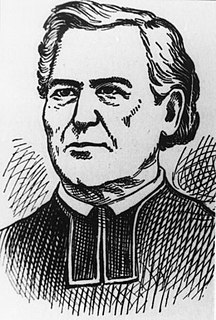
Abbé Jean-Louis Le Loutre was a Catholic priest and missionary for the Paris Foreign Missions Society. Le Loutre became the leader of the French forces and the Acadian and Mi'kmaq militias during King George's War and Father Le Loutre's War in the eighteenth-century struggle for power between the French, Acadians, and Miꞌkmaq against the British over Acadia.

Abbé Pierre Antoine Simon Maillard was a French-born Roman Catholic priest. He is noted for his contributions to the creation of a writing system for the Mi'kmaq indigenous people of Île Royale, Cape Breton Island, Canada. He is also credited with helping negotiate a peace treaty between the British and Mi'kmaq people, which resulted in the Burying the Hatchet Ceremony. He was the first Catholic priest in Halifax and is buried in the St. Peter's Cemetery in downtown Halifax.

The Naval battle off St. John took place on July 14, 1696, between France and England toward the end of King William's War in the Bay of Fundy off present-day Saint John, New Brunswick. The English ships were sent from Boston to interrupt the supplies being taken by French officer Pierre Le Moyne d'Iberville from Quebec to the capital of Acadia, Fort Nashwaak on the Saint John River. The French ships of war Envieux and Profond captured the English frigate Newport, while the English frigate Sorlings and a provincial tender escaped.
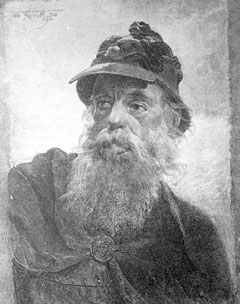
The Siege of Pemaquid was a successful attack by a large band of Abenaki Indians on the English fort at Pemaquid, Fort Charles, then the easternmost outpost of colonial Massachusetts. The French-Abenaki attack was led by Jean-Vincent d'Abbadie de Saint-Castin and Father Louis-Pierre Thury and Chief Moxus. The fall of Pemaquid was a significant setback to the English. It pushed the frontier back to Casco (Falmouth), Maine.

The Sipekne'katik First Nation is composed of four Mi'kmaq First Nation reserves located in central Nova Scotia. As of 2012, the Mi'kmaq population is 1,195 on-Reserve, and approximately 1,190 off-Reserve. The First Nation includes Indian Brook 14, Nova Scotia, near Shubenacadie, Nova Scotia. The band was known as the Shubenacadie First Nation until 2014 when the traditional spelling and pronunciation of its name was officially adopted.

Meductic Indian Village / Fort Meductic was a Maliseet settlement until the mid-eighteenth century. It was located near the confluence of the Eel River and Saint John River in New Brunswick, four miles upriver from present-day Meductic, New Brunswick. The fortified village of Meductic was the principal settlement of the Maliseet First Nation from before the 17th century until the middle of the 18th, and it was an important fur trading centre..

Nova Scotia is a Canadian province located in Canada's Maritimes. The region was initially occupied by Mi'kmaq. During the first 150 years of European settlement, the colony was primarily made up of Catholic Acadians, Maliseet and Mi'kmaq. During the latter seventy-five years of this time period, there were six colonial wars that took place in Nova Scotia. After agreeing to several peace treaties, this long period of warfare ended with the Burial of the Hatchet Ceremony between the British and the Mi'kmaq (1761) and two years later when the British defeated the French in North America (1763). During these wars, Acadians, Mi'kmaq and Maliseet from the region fought to protect the border of Acadia from New England. They fought the war on two fronts: the southern border of Acadia, which New France defined as the Kennebec River in southern Maine. The other front was in Nova Scotia and involved preventing New Englanders from taking the capital of Acadia, Port Royal, establishing themselves at Canso.

The Burying the Hatchet Ceremony happened in Nova Scotia on June 25, 1761 and was one of many such ceremonies where the Halifax Treaties were signed. The treaties ended a protracted period of warfare which had lasted more than 75 years and encompassed six wars between the Mi'kmaq people and the British. The Burying the Hatchet Ceremonies and the treaties that they commemorated created an enduring peace and a commitment to obey the rule of law.
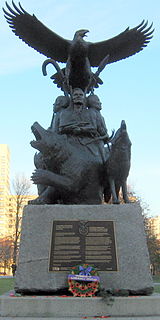
The Maliseet militia were made up of warriors from the Maliseet people of northeastern North America. Along with the Wabanaki Confederacy, the French and Acadian militia, the Maliseet fought the British through six wars over a period of 75 years. They also mobilized against the British in the American Revolution. After confederation, Mi'kmaq warriors eventually joined Canada's war efforts in World War I and World War II.
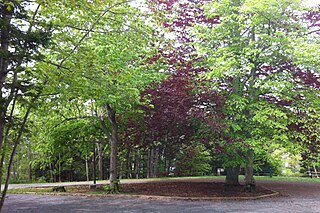
St. Aspinquid’s Chapel was established by Priest Louis-Pierre Thury at Chebucto in the late 17th century. The chapel is a natural stone amphitheatre located by Chain Rock Battery on the Northwest Arm at Point Pleasant Park. There are numerous notable people interred in the burial grounds around the chapel and it is also the location of the Mi’kmaq celebration of the Feast of St. Aspinquid, which was conducted through much of the 18th century. During the French and Indian War two Mi'kmaw chiefs fought each other in a battle near the chapel (1760).



















